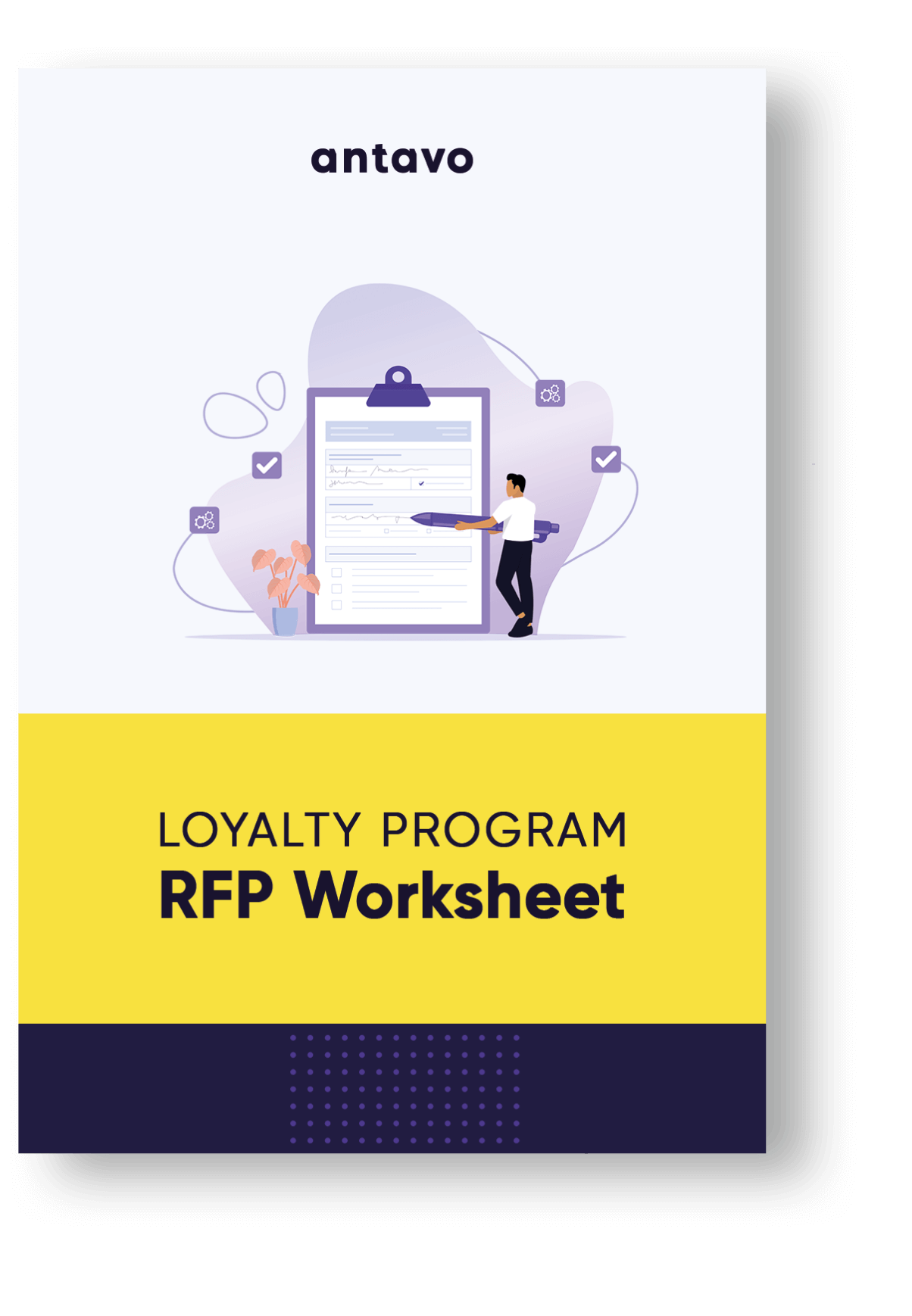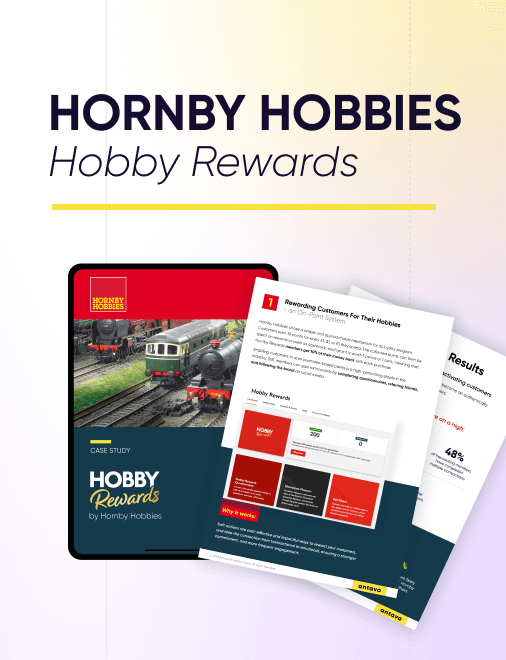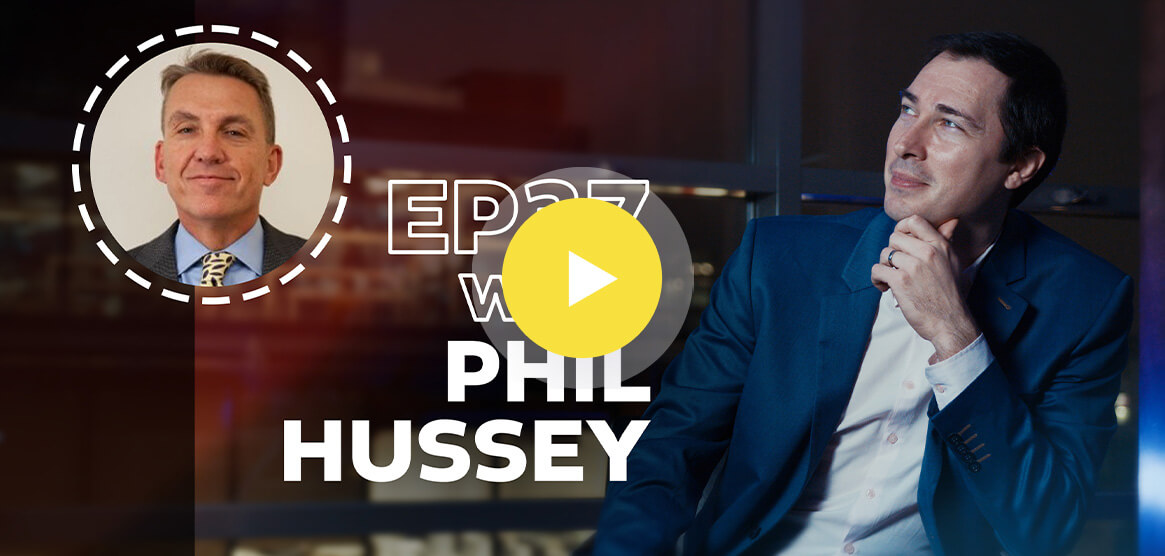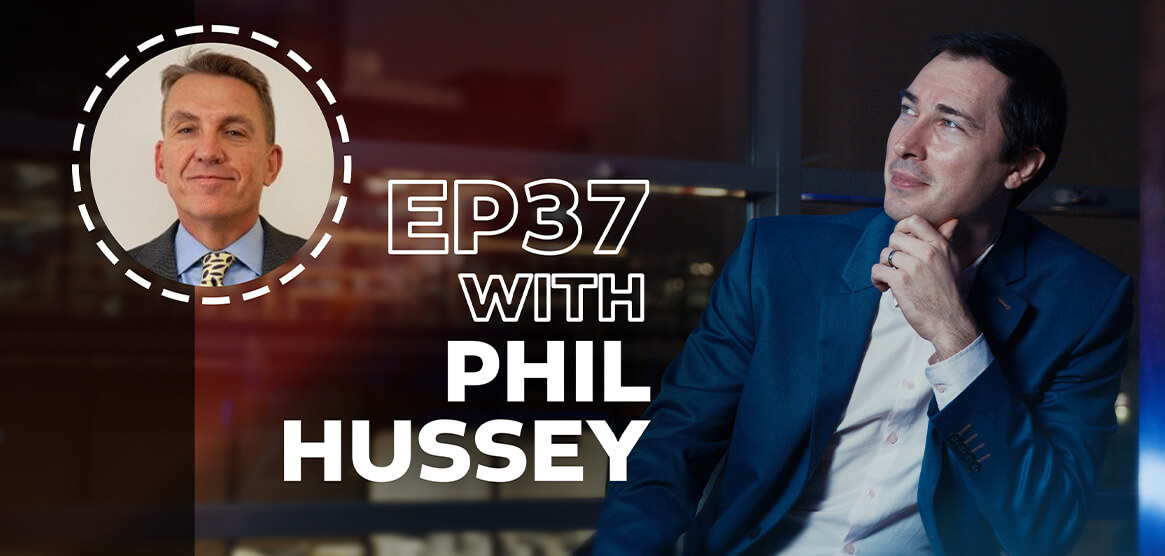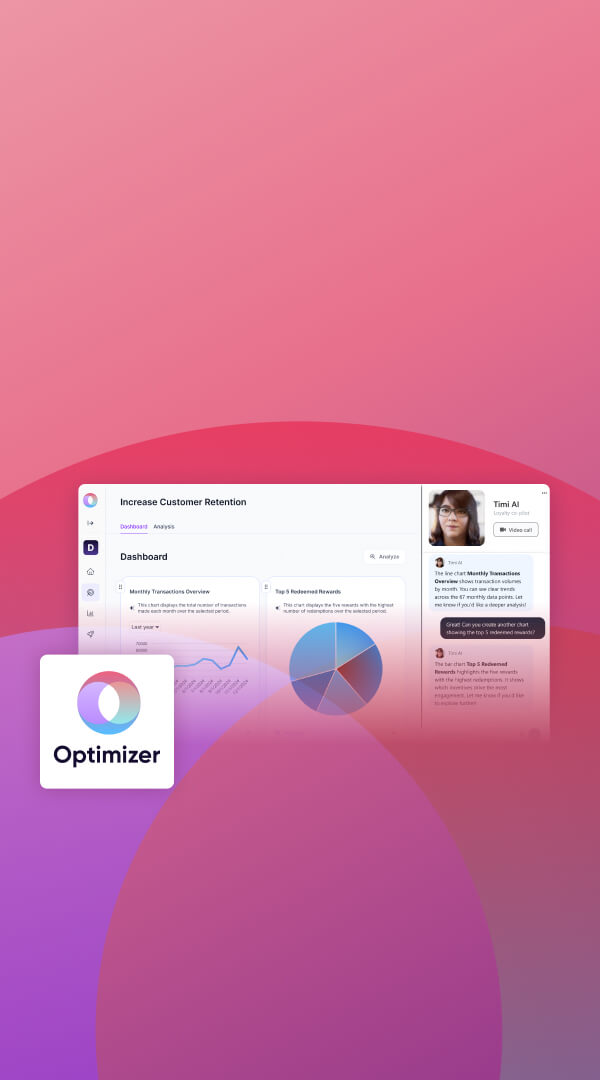During this week’s episode of Antavo’s Loyalty Stories video podcast, our expert guest is Phil Hussey, Principal Consultant at LoyaltyLevers.
The interview for this podcast has been a valuable source for Antavo’s Global Customer Loyalty Report 2024. Make sure to download it for over 30 statistics on loyalty program trends.
During this episode, Phil highlights 7-Eleven’s 7Rewards program as his favorite for its innovative use of tech, especially in cash transactions and personalized offers powered by AI. He also dives into the transformative potential of AI, and challenges in the industry like saturation of loyalty programs and how to navigate around that.
Highlights from our conversation with Phil:
- The growing amount of subscription-based loyalty programs
- The reason why loyalty integration is important for startups
- The impact of marketplaces like Vrbo and Uber have on loyalty strategies
- How AI will transform loyalty programs, and what it means for marketers
Learn more:
- LinkedIn profile of Phil Hussey
- LoyaltyLevers website
- Learn more about Phil’s thoughts on How to Re-Design Loyalty Programs
- Book a demo with Antavo’s loyalty experts
Gabor
Hi and welcome to Loyalty Stories, that is Antavo’s podcast on customer loyalty and loyalty programs. I am Gabor Vigh, one of the Partnership Managers at Antavo, and Antavo is a technology vendor that empowers loyalty programs all around the world. We help various great businesses, such as KFC, Benefit Cosmetics, and very well-known global automotive, fashion, and airport brands, and so on. In this Loyalty Stories podcast,
We dive into the trends around loyalty programs and customer loyalty. We talk with industry experts all around the world to pick their brains, to learn what’s new and what’s next for loyalty programs. Today’s guest is Phil Hussey, the Principal Consultant at LoyaltyLevers with more than 25 years of experience behind him.
LoyaltyLevers provides loyalty program consulting services to top brands who want to go beyond cookie cutter schemes to build true loyalty and maximize ROI. LoyaltyLevers is not just Phil’s company’s name, but a loyalty design framework that he worked out, and it is based on optimizing three key loyalty pillars or levers in this case. So let’s welcome Phil. Hi Phil, how are you doing?
Phil
I’m doing great, how are you Gabor?
Gabor
I’m doing very well. Thank you very much for accepting the invitation for the podcast. Phil, first of all, would you mind briefly introducing yourself for our audience?
Phil
Sure, like you said, I’m really happy to be here. I’m Phil Hussey, and the Principal Consultant at LoyaltyLevers, but have a lot of other experience. I’ve worked as a practitioner for loyalty programs for companies like Marriott and Disney. I’ve worked for some of the top agencies in the United States with clients like Hyatt and Office Depot, JCPenney, Ikea, Hyundai, Jeep, and many others.
And then I launched LoyaltyLevers a couple years ago to really focus on loyalty program design and development. And so that’s what I specialize with. And I work with companies like Antavo to ensure the clients have a strong value proposition and also a strong loyalty technology platform. So that’s what I’m up to these days.
Gabor
Thank you, Phil. And yeah, you listed really great logos in the introduction. So the next question is kind of self-explanatory for me. What is your favorite loyalty program and why?
Phil
Yeah, I do a lot of reviews of different loyalty programs to see how they’re performing across the different loyalty levers in terms of how are they motivating customers, how are they engaging them, and how are they creating true loyalty. And one of the ones that’s really impressed me the most has been the 7Rewards program from 7-Eleven. I don’t know if you’ve joined that, Gabor, but it’s an amazing integration of an app that they’ve got for 7-Eleven, their in-store experience in their rewards program.
And it’s really done nothing less than transform their entire in-store experience. And I’ll give three examples of that from my perspective. One is for 7-Eleven, about 50% of their transactions are in cash. And that’s a big obstacle for any loyalty program.
And one of the things that they’ve been successful in doing is offering a really simple way for customers to come in and load cash directly onto their app right there at the cash register. And so, you know, for customers that are operating, you know, much of their expenditures in cash, that’s a great way to do it.
And it’s a great win for 7-Eleven and it’s a huge boost to their tracking because most programs have never been able to overcome that. So I’d say that alone is a big transformation for 7-Eleven. I’d also say they’re one of the best that I’ve seen in terms of artificial intelligence and using that.
If you think about all the thousands of SKUs that 7-Eleven has, every time you go into the app, depending on what you’ve bought lately, where you are, what store you’re at, what time of day it is, they’re featuring a different product that you can earn, additional bonuses on and or a reward to redeem depending on your balance. So it’s really one of the best uses that I’ve seen for artificial intelligence, constantly adapting and trying to engage customers with new products or get them to buy more of their favorites.
I’d say the other thing that they’re doing, which is really cool is they’ve integrated across a few different business areas. So 7-Eleven has a convenience store, they’ve got fuel outside, and they’ve also got something called 7Now which is delivery of 3,000 plus products in 30 minutes or less. And you can earn rewards for all those activities and they’re really doing a great job of that integration.
So if you think about all the things, I think that ,you know, that 7-Eleven’s goal is to do nothing less than sort of dominate the local market with food, fuel and everything else that you need and um you know I think it’s been a big boost to their business and it’s a very impressive program platform with a lot of innovation.
Gabor
This is really a great example. And in your career, what would you say? What is the piece of work that you are most proud of?
Phil
Lately, in the last couple of years, some of the things that I’ve been working on have actually been startup companies that are more app-based businesses, not largely e-commerce, but not only e-commerce. And that’s been really fun because, you know, like I mentioned, I’ve worked with a lot of big companies, but it’s great to work with venture capital and startup-type companies,
because you get a chance to not only influence the loyalty program, but actually influence the products and the brands because they’re so integrated and it’s also fun to work with CEOs and other folks and they view loyalty not just as an add-on promotion but really as a core component to their product and brand.
One of the focus areas for many of these has been subscriptions, sort of that driving recurring purchases and it’s across many verticals. It includes retail, meal delivery, consumer packaged goods, residential apartment living, entertainment tickets, and things like that. So subscription is really a big part of what’s happening out there.
And I think it’s a huge profit driver and a huge opportunity for loyalty, mainly because loyalty program will give you more options to go beyond just a price proposition for something like a subscription. So you could envision certain bundles and packages that include experiential elements or you know, special status and recognition and or access.
So, or additional points rather than just discounts. And so those points could possibly be used to deepen the subscription or lengthen the subscription. And it really creates a virtuous circle where ,you know, the customer is subscribing, they’re earning, they’re redeeming, and they’re subscribing more.
And I think it gives a bit of a blur between what’s the loyalty program and what’s the subscription offering. And I think that’s a great thing because consumers really want that kind of integration. And it also makes for a super fun project to work on.
Gabor
Great. Do you consider this subscription or the presence of the subscription models as one of the major changes in the loyalty space in the past years or is there anything else that you would say that it was even a bigger change in the loyalty field?
Phil
Yeah, there’s been a few, I’d say subscriptions has been happening, you know, for a number of years and that continues to grow. I think there are a couple of additional things as well in terms of changes to the loyalty industry. I think marketplaces is one of them and that’s another common element of, you know, when I’m getting client engagements coming in and people are wanting to know how they can go to market.
And in almost every case, you know, marketplace is part of the equation. And I think the status today is that marketplaces are accounting for nearly two thirds of all e-commerce. So that’s huge. And of course it all started with Amazon, but it goes well beyond Amazon now to include the restaurant industry and our local retail industry, whether it be point of sale or delivery solutions that allow users to earn points across many, many thousands of locations.
There’s also been lots of reseller markets that have been created in marketplaces, whether it be for entertainment tickets or narrow-based interest plays like dog walking or car sharing. So I think marketplaces has been a big evolution. And I think the impact on loyalty programs is that these programs take it really up a notch where the marketplace is looking to build loyalty to the overall marketplace.
And so there’s a couple of them that have come out with big programs these days. One is VRBO that’s just launched in the last three to four months with one key. And that spans not only all the VRBO marketplace, but the entire Expedia platform. So you can book your travel and whether it be flights, cars, and all the other supporting aspects to it. So OneKey is a great example of a loyalty program in a marketplace situation.
Of course, Uber has also launched their program and maybe not coincidentally called Uber One, also trying to be the one. And that proposition provides unlimited delivery through, there’s nearly a million Uber Eats locations now and 6% back on rides for their members. So that’s a tremendous value proposition right there. And I think Uber One now accounts for 27% of Uber’s gross revenues.
So I think now more than ever, as marketers are thinking about their loyalty program designs, that there are channel or marketplace partners that could be considered, for example, CPGs now have an option to use Fetch to accelerate their loyalty efforts. So it really, I think it looks beyond just the traditional formula of starting your own single brand loyalty program. And it’s breathed, I think, new life into coalitions as an option for loyalty success.
Gabor
Great, thank you, Phil. And if we look into the future, Phil, what do you think, what will be the two main fresh loyalty trends in the upcoming years?
Phil
Yeah, I think one that’s happening is we’ve all seen loyalties getting more and more spending and more and more different types of brands that haven’t had loyalty programs before launching them. And I think there’s a saturation effect of so many loyalty programs being out there. And like I said, the average American belongs to 16 programs.
There are only active in about half. And anecdotally, I’d say that maybe they’re active, truly active and engaged in three or four programs. Most folks have a primary travel program, a primary credit card, maybe a retailer or two. And so that’s a challenging environment. And so as you look at your loyalty program and launching that, to do that, really it raises the bar even more about how much you need to stand out from the competition, offer real and simple value, and be a little different and creative.
Because just putting a reward scheme in place for something that folks purchase maybe a few times a year, it’s not going to be enough to break through that kind of a marketplace saturation. So I think that that’s going to be more and more of an issue.
Also, artificial intelligence is the buzz right now. If you look at the venture capital market and where all the funding’s going, it’s artificial intelligence all over the place. And there’ve been some real advances in the last year with Bard and many others coming online. So, there’s an expectation and an opportunity out there. And really I’d say, and obviously Antavo is using it
to enhance technology solutions like fraud detection, but really it’s yet to be included in loyalty on a really broad basis. So I think the race is on.
You know, how does AI truly create a differentiated loyalty program? And it’s certainly not going to be easy. It’s going to take a lot of innovation and, and design thinking to, to develop a meaningful proposition. So I think people and marketers are trained that for years, loyalty programs have a very predictable earning schedule and, you know, very predictable rewards.
So, changing into a world where the benefits become much more fluid and adaptive with something like artificial intelligence, is going to mean that managers maybe need to let go of the reins a little bit with their loyalty programs and, certainly in the long term, applying that kind of, artificial intelligence is only going to result in better optimization and better results, but it’s going to take a learning curve, I think, to get there, but it should be a really big trends in the next couple of years, I think.
Gabor
Yeah, I believe so. So you’re not the only person on this podcast show who mentioned AI. So yeah, definitely. This is the buzzword these days. And what do you think feel how a loyalty program technology company like Antavo should support this? What are the main features that not just really nice to haves, but have to have these days to support this kind of modern age, new age, innovative loyalty programs.
Phil
Yeah, I think it’s gonna probably have to be in the realm of tighter integrations and maybe playbooks that are established with marketing automation platforms and other vendors in the technology ecosystem because I think it’s one thing to allow flexible access for a loyalty program to do anything. And I think that Antavo does a great job of that. I think, though,you know, it takes a lot to orchestrate a total experience.
And so the more and tighter integrations that can be available to achieve that kind of end experience would be very important to support. So I think the platform is great as it is now, but I think that more integration and development of playbooks with marketing automation and other ecosystem players will be important to actually advance the total experience.
Gabor
Thank you, Phil. And as you remember, last year we were doing a couple of researches around stakeholders and KPI numbers in loyalty programs. And I would like to, just a little bit, go back to that, so maybe see if there is a change, especially in terms of stakeholders, because you are involved in lots of projects. Who do you come across more often? What do you see? Who are your main stakeholders? Is it marketing? Is it IT? Is it the CEO?
Phil
Yeah, it’s because I’m coming in at the consulting level, which is more of a strategic level. I deal less often with people in IT and more often with either the C-level folks or head of marketing folks, brand managers, brand VPs, and things like that. So it’s great to be able to work with a CEO because they’ve got a vision and a charter to do certain things.
And then with the slightly larger companies, it tends to be coming in through the marketing area or strategy area versus IT or other areas. But that’s just where I fit into the ecosystem, I guess.
Gabor
Great, thank you, Phil. And what would you consider the most powerful KPIs and measures of a successful loyalty program?
Phil
Yeah, I think there’s three and it sort of aligns in my mind with the loyalty levers and the balance scorecard and the way that I look at things. So I would say, of course there’s change in behavior. And I think that, you know, many programs will focus on the number of members enrolled or the number of members active or gross revenue.
But I always like to focus in on incremental, so whether it be size of the ticket or profit margin or frequency really growing a very specific metric, I think, is key, a key part to the balance scorecard. But I would say as important would be the level of engagement with the brand and that can be measured through website visits, through open rates and click rates and emails, and a number of other places, engagement and usage of the different benefits that a loyalty program has.
Because I think, you know, if you’re seeing changes in behavior, but you aren’t seeing real engagement with the brand or the program, it’s not really that believable that the program’s creating that change. And then lastly, I would say is what I call loyalty sentiment or emotional loyalty or the attitude of connection towards the brand. And I’d say, you know, that’s usually measured via survey, but I think it’s super important to measure that over time and see, are you really creating, you know, that sense of loyalty or are you buying loyalty through promotions and incentives or are you creating that actual loyalty?
And I think if you can do all three of those things in terms of change in behavior, and driving engagement and improving the overall loyalty sentiment for the brand, then you’ve got a really strong loyalty program. And if you are doing two or three of those, or one or two of those things, you could also have a very good program and it tells you where you need to focus your efforts.
Gabor
Great insights. Thank you, Phil. Is there anything else in mind that you wanted to share with the audience?
Phil
Well, I think we touched on this a little bit earlier, but one of the most surprising things that I’ve seen in the last year or two has been how resilient loyalty programs have been. They’ve retained and or grown their funding in an environment of uncertainty, you know, economic downturn. So I’d say that, you know, the resilience of loyalty programs and spending 20% or more growth every year to really drive that, you know, a huge testament to the effectiveness of the program. So that’s been pretty exciting to see.
Gabor
Great stuff. Thank you very much, Phil, for being here with us today and sharing your thoughts. I really, really enjoyed our conversation and even if it was like a short conversation, as at least I felt it that way, I still had a couple of favourite parts, especially when we were talking about the increasing numbers of the subscription programmes,
because this is something that Antavo experiences on the market as well and the rising importance of the AI tools and AI technology adaptation in loyalty programs as well. And of course, that loyalty programs can be used to overcome some of these economic downturns. I think these are all really great food for thought. So thank you very much, Phil, for being here with us today.
Phil
All right, thanks. Talk to you soon.
Gabor
And for the viewers, wherever you listen to us, be it on the podcast platform, YouTube or LinkedIn, please like this podcast and subscribe to our channel, so this way you can get notified about our next episodes. And also tell us about your point of view on loyalty in the comment section below. Visit antavo.com to discover your next loyalty software.
Antavo is a next-generation loyalty program technology vendor, used by global companies like KFC, Benefit Cosmetics, global automotive, fashion and airport brands all over the world.
But also visit LoyaltyLevers website at loyaltylevers.com or Phil’s LinkedIn page to find out more exciting details of his work.
Thank you and see you on the next one. Bye for now.
